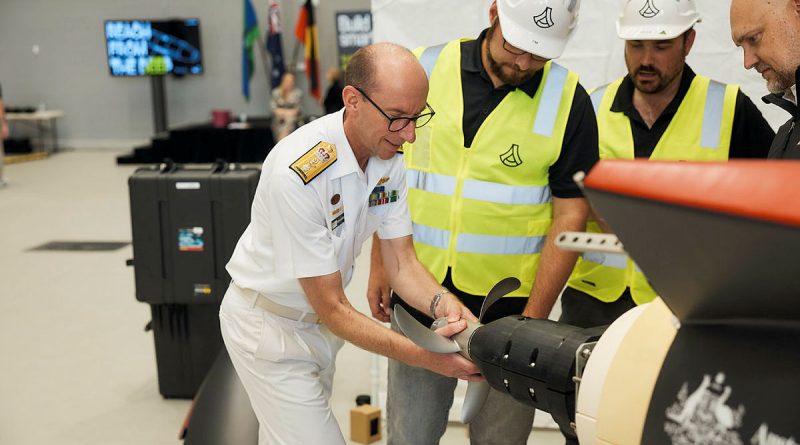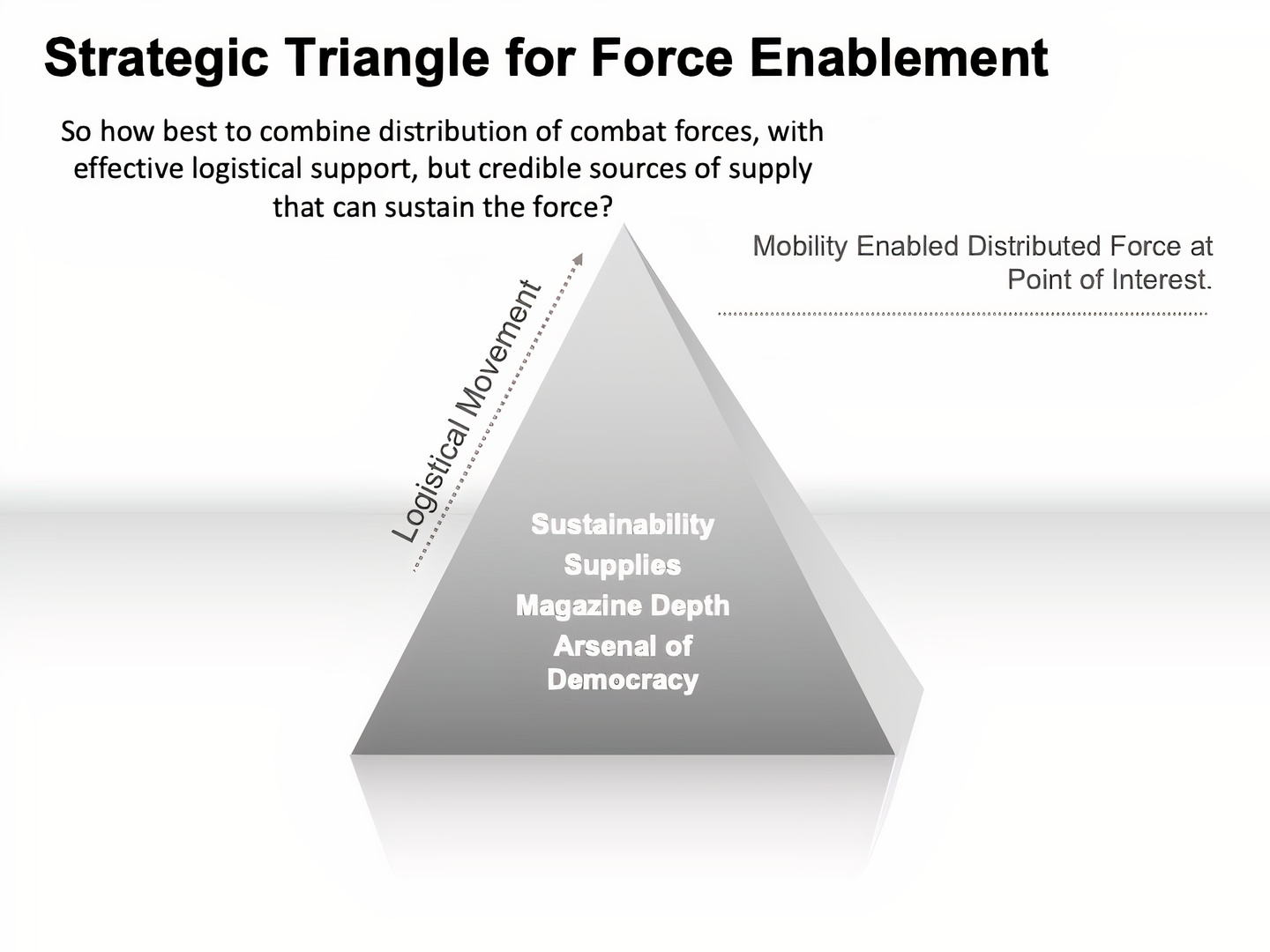By Robbin Laird
During my March-April 2023 visit to Australia. I had a chance to meet with Air Vice-Marshal Michael Kitcher, Deputy Chief Joint Operations (DCJOPS) and to talk with him about the Joint Operations Focus on regional defence after a long period in the Middle East. AVM Kitcher is responsible for assisting Chief Joint Operations (CJOPS) with the command of ADF joint operations, directing command units and assigned forces in the planning and conduct of campaigns, operations, joint exercises, and other activities.
I last met with him during a 2018 visit to Williamtown Airbase with Murielle Delaporte. He was then the Air Combat Group Commander as Air Commodore Kitcher. During that visit we focused on the transition from legacy aircraft to a fifth-generation force.
We started the April 2023 discussion by focusing on the shift of the Joint Operations Command from the shaping of a joint force for operations in the Middle East to a refocusing on joint operations in the region with core allies to shape more effective coordinated allied operations. Kitcher pointed out that the command had been established in 2007 to plan, execute and optimise the conduct of ADF joint operations.
I noted that during the ADF’s participation in the Middle East Wars, the RAAF for the first time deployed an integrated air task force which included air battle management aircraft, lifters, tankers, and fighters and that this experience laid a foundation for bringing back into the Indo-Pacific region an ADF force that had exercised really for the first time this level of air tasking integration.
But as Kitcher underscored: “The focus in this period, up to say 2017, for CJOPS was on operations in the Middle East whilst managing operations in our region. We clearly have leveraged the earlier experiences in our renewed focus on the conduct of Operations, Actions and Activites, OAA, in the Indo Pacific. We are focused on developing a theatre campaign plan to translate strategic guidance into the OAA we execute in our region to achieve our desired objectives.
“We are focused on ways we can operate as a joint force to optimise our regional OAA to have the maximum positive effect in supporting our theater campaign plan. You don’t get the maximum benefits from a joint force unless firstly the services provide you with trained personnel capable of executing joint missions and then HQJOC, through focused joint planning, maximises the potential of the individual components. We have made good progress along this path but still have a way to go.”
Air Vice-Marshal Kitcher highlighted that we are “now squarely focused on managing operations in a coordinated fashion in our region.” And this means both how to get the best joint force effect but also how to coordinate the ADF effort with core allies in also getting the best proper coalition effect.
Obviously in working with coalition partners, national sovereignty has to be respected but at the same time for effectiveness in operations coalition forces need to operate in an integrated manner. This is a key tension which needs to be managed, notably in crises where the government of the day will make decisions about the allowable operations of their national forces, these individual decisions may challenge the effectiveness of a coalition force.
This is challenge which CJOPS has to be prepared to deal with in both exercises and real world operations. Kitcher underscored: “Planning and exercises prepare the way for joint and coalition capabilities but executing them in an actual operational situation requires agility and flexibility of command by CJOPS and his staff, and our parallel staff in the various coalition headquarters.”
Air Vice-Marshal Kitcher emphasized that working with partners to deal with challenges in the region has clearly grown in importance for both deterrent and operational impacts. The relationship with U.S. forces has certainly become closer. He mentioned an upcoming CPX exercise with the U.S. Indo-PACOM command in which the ADF and the U.S. will run a detailed CPX on a regional scenario together. The cooperation with both Japan and India is also growing.
And with Australia’s regional defence emphasis, joint operations will need to focus on regional partners in the Australian neighborhood. This will see more emphasis on building regional expertise and continued engagement with regional countries through relationship building, languages, cultural awareness and local knowledge. This can provide an important aspect of Australian leadership in a regional military coalition but dependent on the crisis, a differentiator for Australian involvement as well.
As Air Vice-Marshal Kitcher summarized their job: “We’ve got a responsibility to make sure that we optimize how well the joint force works together for the greatest positive effect and present the best possible options to government on how that force might be employed. We’ve also got a remit to ensure that we can work as closely and as efficiently and effectively as possible with our regional partners in both peacetime HADR situations and potential crisis situations.
“We’ve got a responsibility to be as efficient and as effective together among like-minded nations militaries. If we are not careful, uncoordinated actions in our region will overwhelm smaller countries and not have a positive effect. Planning and conducting OAA together ensures we present a much more credible regional security capability than we do as individual nations. The militaries have a large part of the responsibility to generate how we can do so. And then it’s up to individual governments to determine how those forces will be employed at any one time or in any one set of security circumstances.”
We closed the discussion by focusing on a question I asked him with regard to how does Australia best leverage its geography in shaping its defence and deterrent structure?
He answered that is a core challenge and question. He noted: “The really good thing about Australia is the size of Australia and the amount of nothing that is in Australia. The really bad thing about Australia is the size of Australia and the amount of nothing that is in Australia.”
Australia’s population and economic base is in the South and East of the country; the core defence locations for projecting force into the region are in the North, North East and North West of Australia. Northern Australia (especially the North and North West) is lightly populated without significant infrastructure and major industrial base. How does Australia have capabilities which can be used to project force into the region from Northern Australia but the majority of the population and industrial base remains well in the south?
For example, the RAAF has a number of bare bases in northern Australia in addition to their main operating bases. But how can those bases really be used for operations in a crisis, and flexibly use all of the basing options available? How to support all these locations? How to move fuel and weapons? How to ensure the necessary level of resilience and that combat support, logistics and health elements are available? There are no easy or cheap solutions to achieve a viable outcome.
Air Vice-Marshal Kitcher concluded: “The challenge of how we optimize the Australian geography for defence is real and is quite significant. As is how we use Australian geography for the best effect of allies and partners that we might invite to deploy here. This is an ongoing process and a real challenge.”
Featured Photo: (R-L) Air Vice-Marshal Michael Kitcher, Deputy Chief Joint Operations talks with HMAS Hobart’s Weapons Electrical Engineering Officer Lieutenant Commander Monica Tabulo during a visit to the ship in Manila, Philippines as a part of a Regional Presence Deployment.
Credit: Australian Department of Defence, October 22, 2022.
See also the following:
The Air Combat Group in Transition: The Perspective of Air Commodore Kitcher





